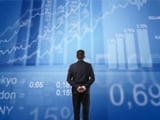 One of the fundamental principles of economics is “rationality”—the notion that all actors in a market have similar information, preferences, and abilities to project the future.
One of the fundamental principles of economics is “rationality”—the notion that all actors in a market have similar information, preferences, and abilities to project the future.
Like all economists, I know this isn’t really true, yet it still influences how I view the world. So the extent to which Daniel Kahneman proves this idea false—not just at the aggregate level, but at the individual level—comes as something of a shock.
We’re a lot more irrational than we thought
In Thinking, Fast and Slow, Kahneman—the Nobel Prize-winning psychologist who, along with Amos Tversky, created the set of ideas that became behavioral finance—shows that the way we think is far from rational.
Most of us are reasonably confident in our own abilities. Kahneman proceeds to undermine that confidence via a step-by-step process, asking readers to answer case questions and then revealing the hidden biases and errors our reactions contain. You finish the book with a newfound appreciation for just how uncertain your own mind is.
If you’re skeptical of the claims, you can examine your own reactions and Kahneman’s reasoning. You’ll probably find that he’s right and you're wrong.
Key takeaways for investors
I won’t attempt to summarize this weighty book, but several points are particularly relevant for investors.
The illusion of validity. Chapter 20 includes a section called “The Illusion of Stock-Picking Skill,” which everyone who invests should read. One of its primary conclusions is that “a major industry appears to be built on an illusion of skill.” (The italics are Kahneman’s.) You may not agree with it—and I don’t, entirely—but you should be aware of the argument.
The power of formulas. In the following chapter, “Intuitions Vs. Formulas,” Kahneman takes it a step further: “The research suggests a surprising conclusion: to maximize predictive accuracy, final decisions should be left to formulas, especially in low-validity environments.” I like this idea for a number of reasons, not least of which is that it supports my own research focus on rules-based investing.
The inside view versus the outside view. In brief, the inside view is based on insider knowledge of a particular situation, while the outside view looks at a large sample of similar situations, glossing over the specifics. Surprisingly, the outside view is often more accurate—and always worth considering.
A recent example involves U.S. interest rates. The inside view, looking at the improving economy, suggests rates might increase faster. The outside view, looking at recoveries from previous financial crises, says rates will remain low. So far, at least, rates have stayed at their low level. Score one for the outside view.
Seeing the error of our ways
Few books I’ve read have been as surprising, as interesting, and as revealing as this one. For anyone who makes decisions, Thinking, Fast and Slow will leave you wiser (and potentially sadder) as you realize the extent of your possible errors. By opening your eyes to these mistakes, in a clear and memorable way, Kahneman’s book promises to meaningfully improve your decision-making going forward.
Verdict: Highly recommended.


 Print
Print

